Community Forum
Horse World Online
Breed horses and ponies, raise your foals, and train the next champion in this exciting and realistic online horse breeding game.
Wild Horse Ridge Stables Farm Log (PLEASE DO NOT POST ON THIS FORUM)
Create a topic to track the progress of your breeding program, help support other breeders with their breeding goals.
-
PeacefulOreo

- Posts: 4984
- Joined: Fri Sep 07, 2018 7:55 pm
- Location: Eastern USA
- Visit My Farm
Wild Horse Ridge Stables Farm Log (PLEASE DO NOT POST ON THIS FORUM)
Post by PeacefulOreo »
Wild Horse Ridge Stables Farm Log
"A horse gallops with his lungs, perseveres with his heart, and wins with his character." - Federico Tesio

My Brands
If you buy a horse from me that I bred, please keep the horse's brand in its name so that I can keep track of the horses that I bred. Also please DO NOT copy ANY of these brands, this includes putting my brand on any horse(s) that I didn't breed without asking for my permission to do so.
꧁☬WHRTB☬꧂ - Wild Horse Ridge Stables Thoroughbred
꧁☬WHRA☬꧂ - Wild Horse Ridge Stables Arabian
꧁☬WHRW☬꧂ - Wild Horse Ridge Stables Warlander
꧁☬WHRT☬꧂ - Wild Horse Ridge Stables Trakehner
꧁☬WHRM☬꧂ - Wild Horse Ridge Stables Morgans and Morabs
꧁☬WHR☬꧂ - Wild Horse Ridge Stables Other Horses
꧁☬WHRH☬꧂ - Wild Horse Ridge Stables Hanoverian
꧁☬WHRAS☬꧂ - Wild Horse Ridge Stables American Saddlebred
꧁☬WHRC☬꧂ - Wild Horse Ridge Stables Connemara
꧁☬WHRRT☬꧂ - Wild Horse Ridge Stables Russian Trotter
დ♥WHR - Racing Silver Black Pearl Dapple Thoroughbred Breeders Club Brand for Wild Horse Ridge Stables
꧁☬WHRA☬꧂ - Wild Horse Ridge Stables Arabian
꧁☬WHRW☬꧂ - Wild Horse Ridge Stables Warlander
꧁☬WHRT☬꧂ - Wild Horse Ridge Stables Trakehner
꧁☬WHRM☬꧂ - Wild Horse Ridge Stables Morgans and Morabs
꧁☬WHR☬꧂ - Wild Horse Ridge Stables Other Horses
꧁☬WHRH☬꧂ - Wild Horse Ridge Stables Hanoverian
꧁☬WHRAS☬꧂ - Wild Horse Ridge Stables American Saddlebred
꧁☬WHRC☬꧂ - Wild Horse Ridge Stables Connemara
꧁☬WHRRT☬꧂ - Wild Horse Ridge Stables Russian Trotter
დ♥WHR - Racing Silver Black Pearl Dapple Thoroughbred Breeders Club Brand for Wild Horse Ridge Stables
Forums I'm Involved In
Account Security
Silver Black Pearl Dapple Breeding Chit Chat
Wild Horse Ridge Stables Horse Counter
h a z e l's Horse World Online Monthly Racing Newsletter
Triple Star Thoroughbred Racing Hall Of Fame
Training Communications and Tracking
Racehorse Breeding Help
WHR International Thoroughbred Grand Prix Hall of Fame
Silver Black Pearl Dapple Breeding Chit Chat
Wild Horse Ridge Stables Horse Counter
h a z e l's Horse World Online Monthly Racing Newsletter
Triple Star Thoroughbred Racing Hall Of Fame
Training Communications and Tracking
Racehorse Breeding Help
WHR International Thoroughbred Grand Prix Hall of Fame
Useful Links
Official HWO Forum Rules
Totina's "Horse colours: Names and pictures"
Totina's "All Breeders Report Comments"
Little_Cookie771's information on Competition and Feed forum
Kayaine's "~DWM~ Horse Training Guide" (nearly all trainers use this guide)
Search for a member
Silverine's Discipline Potential Evaluation
Racehorse Breeding Help
World Records
Wild Horse Ridge Stables Finest Thoroughbreds
Help for new players (on the Wild Horse Ridge Stables website)
Wild Horse Ridge Stables Website (home page)
Breeds Wiki
Search Forum
Thoroughbreds (a post on this forum)
Arabians (a post on this forum)
Trakehners (a post on this forum)
Warlanders (a post on this forum)
Hanoverians (a post on this forum)
Morgans (a post on this forum)
Morabs (a post on this forum)
American Saddlebreds (a post on this forum)
Connemaras (a post on this forum)
Thoroughbred Tracker on Google Spreadsheets
Wild Horse Ridge Stables
Racehorse Breeding Help
PeacefulOreo's profile
Jewels65 Comprehensive Racehorse Guide
Thoroughbred Racing Association Website
Totina's "Horse colours: Names and pictures"
Totina's "All Breeders Report Comments"
Little_Cookie771's information on Competition and Feed forum
Kayaine's "~DWM~ Horse Training Guide" (nearly all trainers use this guide)
Search for a member
Silverine's Discipline Potential Evaluation
Racehorse Breeding Help
World Records
Wild Horse Ridge Stables Finest Thoroughbreds
Help for new players (on the Wild Horse Ridge Stables website)
Wild Horse Ridge Stables Website (home page)
Breeds Wiki
Search Forum
Thoroughbreds (a post on this forum)
Arabians (a post on this forum)
Trakehners (a post on this forum)
Warlanders (a post on this forum)
Hanoverians (a post on this forum)
Morgans (a post on this forum)
Morabs (a post on this forum)
American Saddlebreds (a post on this forum)
Connemaras (a post on this forum)
Thoroughbred Tracker on Google Spreadsheets
Wild Horse Ridge Stables
Racehorse Breeding Help
PeacefulOreo's profile
Jewels65 Comprehensive Racehorse Guide
Thoroughbred Racing Association Website
Clubs I'm In
The United Racing Breeders Club (Position: President)
Racing Silver Black Pearl Dapple Thoroughbred Breeders Club (Position: President)
The Camelot Arabian Association (Position: President)
World Class Racehorses Association (Position: President)
Spotted Racing Thoroughbred Breeders Club (Position: Member)
『ℛℛ』The Royal Racehorse Club (Position: Member)
~Accelerated Racers - Jockey Club~ (Position: Member)
Trakehner Breeders Association (Position: Member)
Miracle Racing Association (Position: Member)
Fulmination Imperial Racing Club (Position: Member)
Racing Silver Black Pearl Dapple Thoroughbred Breeders Club (Position: President)
The Camelot Arabian Association (Position: President)
World Class Racehorses Association (Position: President)
Spotted Racing Thoroughbred Breeders Club (Position: Member)
『ℛℛ』The Royal Racehorse Club (Position: Member)
~Accelerated Racers - Jockey Club~ (Position: Member)
Trakehner Breeders Association (Position: Member)
Miracle Racing Association (Position: Member)
Fulmination Imperial Racing Club (Position: Member)
Services I provide
Only players who are on my foes list aren't able to access my services. I currently do not train horses.
WHR Aging and Mare Popping Services
Wild Horse Ridge Stables Boarding and Champing Facility (Currently on hold)
Wild Horse Ridge Stables Horse Leasing
WHR Custom Designs
Wild Horse Ridge Stables Boarding and Champing Facility (Currently on hold)
Wild Horse Ridge Stables Horse Leasing
WHR Custom Designs
Sales and Auctions
Beyond the horses/forums linked, right below this message in this particular section, I DO NOT have any horses for sale. So please DO NOT ask me for any other horses that aren't listed here. Only players who are on my foes list aren't able to access my sales and auctions
Studs
Beyond the horses/forums linked, right below this message in this particular section, I DO NOT have any stallions for public stud. So please DO NOT ask me for any other horses that aren't listed here. Only players who are on my foes list aren't able to access my studs
Competitions I host
Racing
Monthly Secretariat Honorary Level 2 Race
Weekly Secretariat Honorary Level 1 Race - Deleted because a player entered multiple accounts into it while knowing that it was against the rules.
Monthly Secretariat Honorary Level 3 Race
Wild Horse Ridge Stables Level 2 Monthly Thoroughbred Race
Annual HWO Triple Star Thoroughbred Racing
WHR International Thoroughbred Grand Prix
Weekly Secretariat Honorary Level 1 Race - Deleted because a player entered multiple accounts into it while knowing that it was against the rules.
Monthly Secretariat Honorary Level 3 Race
Wild Horse Ridge Stables Level 2 Monthly Thoroughbred Race
Annual HWO Triple Star Thoroughbred Racing
WHR International Thoroughbred Grand Prix
Steeplechasing
Signature
A big thanks to h a z e l who created the image for me! Please DO NOT copy ANY part my signature.
How to Contact Me
1. Private Messaging PeacefulOreo (will work until August 28th, 2021, 8:09 am)
2. Pinging PeacefulOreo as shown below (please post where this link will take you and please do not post on this forum):
3. Finding me on the HWO chat
2. Pinging PeacefulOreo as shown below (please post where this link will take you and please do not post on this forum):
Code: Select all
[quote="PeacefulOreo"]put ... or a message here[/quote]3. Finding me on the HWO chat
Last edited by PeacefulOreo on Wed Jul 21, 2021 10:43 pm, edited 69 times in total.
-
PeacefulOreo

- Posts: 4984
- Joined: Fri Sep 07, 2018 7:55 pm
- Location: Eastern USA
- Visit My Farm
Re: Wild Horse Ridge Stables Farm Log (PLEASE DO NOT POST ON THIS FORUM)
Post by PeacefulOreo »
Thoroughbreds
About the breed
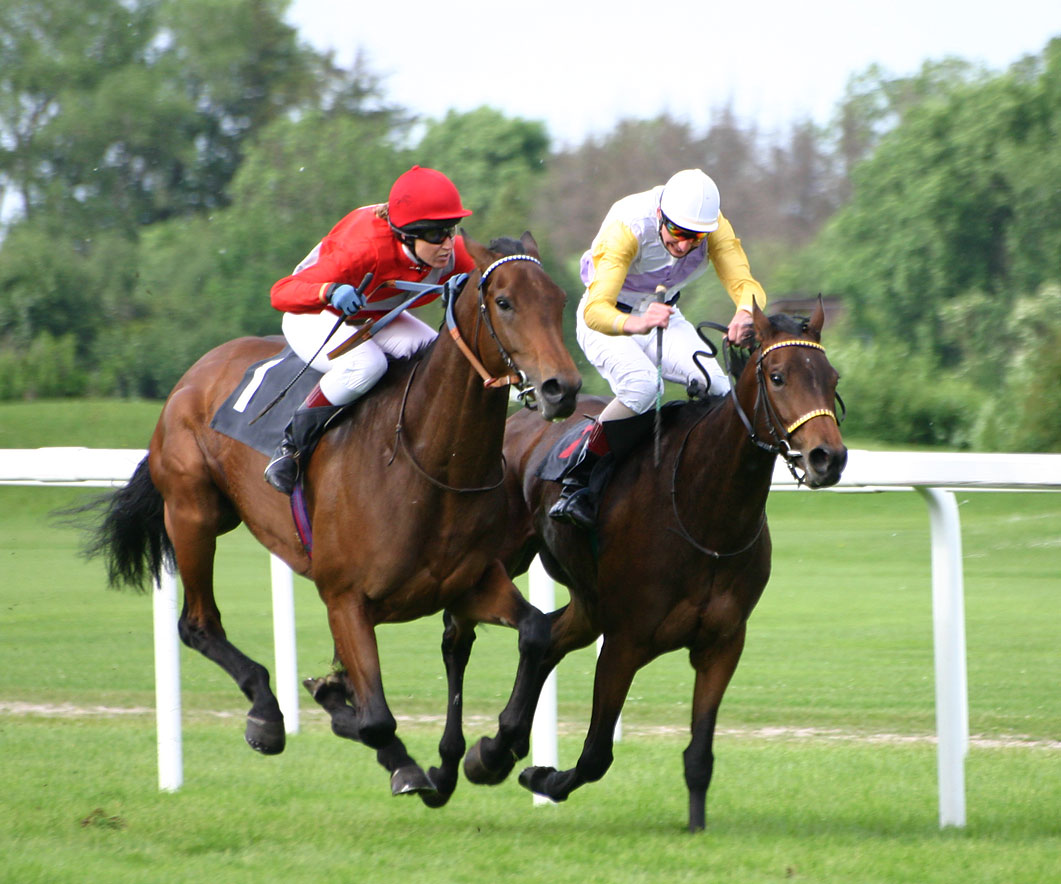
"The Thoroughbred as it is known today was developed in 17th- and 18th-century England, when native mares were crossbred with imported Oriental stallions of Arabian, Barb, and Turkoman breeding. All modern Thoroughbreds can trace their pedigrees to three stallions originally imported into England in the 17th and 18th centuries, and to a larger number of foundation mares of mostly English breeding. During the 18th and 19th centuries, the Thoroughbred breed spread throughout the world; they were imported into North America starting in 1730 and into Australia, Europe, Japan and South America during the 19th century. Millions of Thoroughbreds exist today, and around 100,000 foals are registered each year worldwide.
Thoroughbreds are used mainly for racing, but are also bred for other riding disciplines such as show jumping, combined training, dressage, polo, and fox hunting. They are also commonly crossbred to create new breeds or to improve existing ones, and have been influential in the creation of the Quarter Horse, Standardbred, Anglo-Arabian, and various warmblood breeds.
Thoroughbred racehorses perform with maximum exertion, which has resulted in high accident rates and health problems such as bleeding from the lungs. Other health concerns include low fertility, abnormally small hearts and a small hoof-to-body-mass ratio. There are several theories for the reasons behind the prevalence of accidents and health problems in the Thoroughbred breed, and research is ongoing.
Breed characteristics
The typical Thoroughbred ranges from 15.2 to 17.0 hands (62 to 68 inches, 157 to 173 cm) high, averaging 16 hands (64 inches, 163 cm). They are most often bay, dark bay or brown, chestnut, black, or gray.[1] Less common colors recognized in the United States include roan and palomino. White is very rare, but is a recognized color separate from gray.[2] The face and lower legs may be marked with white,[3] but white will generally not appear on the body. Coat patterns that have more than one color on the body, such as Pinto or Appaloosa, are not recognized by mainstream breed registries.[2][4] Good-quality Thoroughbreds have a well-chiseled head on a long neck, high withers, a deep chest, a short back, good depth of hindquarters, a lean body, and long legs.[3][5] Thoroughbreds are classified among the "hot-blooded" breeds, which are animals bred for agility and speed and are generally considered spirited and bold.[6]
Thoroughbreds born in the Northern Hemisphere are officially considered a year older on the first of January each year;[7] those born in the Southern Hemisphere officially are one year older on the first of August.[8] These artificial dates have been set to enable the standardization of races and other competitions for horses in certain age groups.[9]"
- This information was found on Wikipedia.
Best Times and Record Holders
Prince
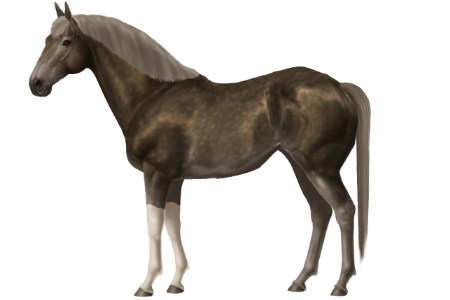
Discipline(s): Racing
Best Time(s): 01:58.48 minutes at Level 10 Racing competition
Status: Not for public stud, never will be. Private stud only. Never for public/private sale, never will be.
Other Notes: First horse bred at Wild Horse Ridge Stables to make a racing time under 1:59.00 minutes. Currently is the second fastest racehorse bred at Wild Horse Ridge Stables.
Rascal
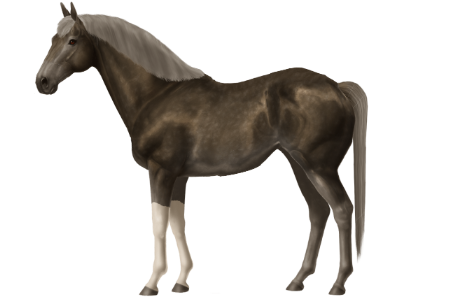
Discipline(s): Racing
Best Time(s): 01:58.93 minutes at Level 2 Racing competition
Status: Not for public stud, never will be. Private stud only. Never for public/private sale, never will be.
Other Notes: Second horse bred at Wild Horse Ridge Stables to make a racing time under 1:59.00 minutes. Currently is the fourth fastest racehorse bred at Wild Horse Ridge Stables.
Hurricane
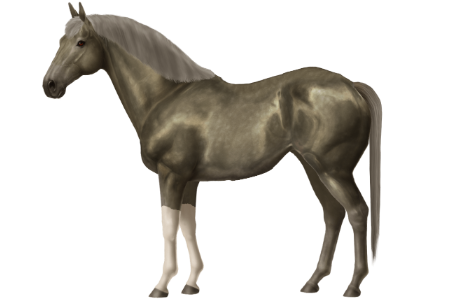
Discipline(s): Racing and Steeplechasing
Best Time(s): 10:17.25 minutes at Level 7 Steeplechasing competition (made a record, previous) and 01:59.81 minutes at Level 6 Racing competition
Status: Retired from competing. Not for public stud, never will be. Private stud only. Never for public/private sale, never will be.
Other Notes:
Flametail
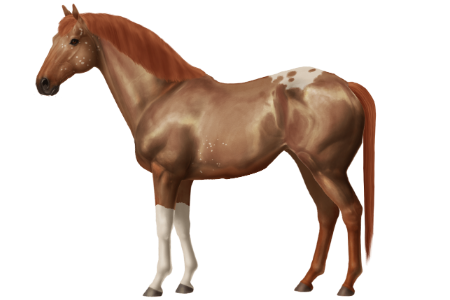
Discipline(s): Racing and Steeplechasing
Best Time(s): 10:14.52 minutes at Level 9 Steeplechasing competition (made a record, previous) and 01:59.53 minutes at Level 10 Racing competition
Status: Not for public stud, never will be. Private stud only. Never for public/private sale, never will be.
Other Notes: Second horse bred at Wild Horse Ridge Stables to break a record, first bred at Wild Horse Ridge Stables to break 2 records, and first bred at Wild Horse Ridge Stables to break 2:00.00 minutes in racing.
Thunder
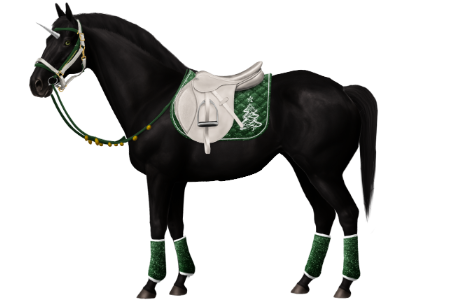
Discipline(s): Racing and Steeplechasing
Best Time(s): 10:21.87 minutes at Level 3 Steeplechasing competition (made a record, previous) and 02:00.91 minutes at Level 10, Level 9, and Level 8 Racing competitions.
Status: Retired from competing. Not for public stud, never will be. Private stud only. Never for public/private sale, never will be.
Other Notes: 2nd in 2019 MFI Belmont Stakes. Second horse bred at Wild Horse Ridge Stables to have a speed comment of "I think you've got the next Secretariat!".
Jinx
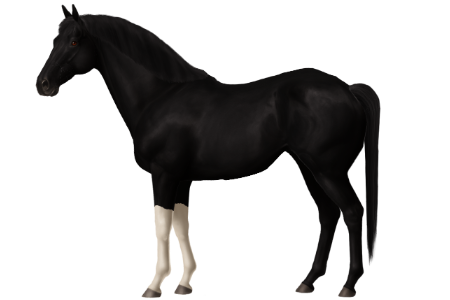
Discipline(s): Racing
Best Time(s): 01:58.81 minutes at Level 6 Racing competition and 01:58.81 minutes at Level 10 Racing competition
Status: Not for public stud, never will be. Private stud only. Never for public/private sale, never will be.
Other Notes: My fourth horse to break 1:59.00 minutes and the third fastest horse I've bred. A colt of previous racing record holding stallion named Maeden. All of his foals and descendants are to stay within the United Racing Breeders Club only
Omaha

Discipline(s): Racing
Best Time(s): 01:58.39 minutes at Level 10 Racing competition
Status: Not for public stud, never will be. Private stud only. Never for public/private sale, never will be.
Other Notes: My third horse to break 1:59.00 minutes and the fastest horse I've bred. A grand colt of Jinx. All of his foals and descendants are to stay within the United Racing Breeders Club only

Discipline(s): Racing
Best Time(s): 01:58.48 minutes at Level 10 Racing competition
Status: Not for public stud, never will be. Private stud only. Never for public/private sale, never will be.
Other Notes: First horse bred at Wild Horse Ridge Stables to make a racing time under 1:59.00 minutes. Currently is the second fastest racehorse bred at Wild Horse Ridge Stables.
Rascal

Discipline(s): Racing
Best Time(s): 01:58.93 minutes at Level 2 Racing competition
Status: Not for public stud, never will be. Private stud only. Never for public/private sale, never will be.
Other Notes: Second horse bred at Wild Horse Ridge Stables to make a racing time under 1:59.00 minutes. Currently is the fourth fastest racehorse bred at Wild Horse Ridge Stables.
Hurricane

Discipline(s): Racing and Steeplechasing
Best Time(s): 10:17.25 minutes at Level 7 Steeplechasing competition (made a record, previous) and 01:59.81 minutes at Level 6 Racing competition
Status: Retired from competing. Not for public stud, never will be. Private stud only. Never for public/private sale, never will be.
Other Notes:
Flametail

Discipline(s): Racing and Steeplechasing
Best Time(s): 10:14.52 minutes at Level 9 Steeplechasing competition (made a record, previous) and 01:59.53 minutes at Level 10 Racing competition
Status: Not for public stud, never will be. Private stud only. Never for public/private sale, never will be.
Other Notes: Second horse bred at Wild Horse Ridge Stables to break a record, first bred at Wild Horse Ridge Stables to break 2 records, and first bred at Wild Horse Ridge Stables to break 2:00.00 minutes in racing.
Thunder

Discipline(s): Racing and Steeplechasing
Best Time(s): 10:21.87 minutes at Level 3 Steeplechasing competition (made a record, previous) and 02:00.91 minutes at Level 10, Level 9, and Level 8 Racing competitions.
Status: Retired from competing. Not for public stud, never will be. Private stud only. Never for public/private sale, never will be.
Other Notes: 2nd in 2019 MFI Belmont Stakes. Second horse bred at Wild Horse Ridge Stables to have a speed comment of "I think you've got the next Secretariat!".
Jinx

Discipline(s): Racing
Best Time(s): 01:58.81 minutes at Level 6 Racing competition and 01:58.81 minutes at Level 10 Racing competition
Status: Not for public stud, never will be. Private stud only. Never for public/private sale, never will be.
Other Notes: My fourth horse to break 1:59.00 minutes and the third fastest horse I've bred. A colt of previous racing record holding stallion named Maeden. All of his foals and descendants are to stay within the United Racing Breeders Club only
Omaha

Discipline(s): Racing
Best Time(s): 01:58.39 minutes at Level 10 Racing competition
Status: Not for public stud, never will be. Private stud only. Never for public/private sale, never will be.
Other Notes: My third horse to break 1:59.00 minutes and the fastest horse I've bred. A grand colt of Jinx. All of his foals and descendants are to stay within the United Racing Breeders Club only
Other Best
Crazy Escape
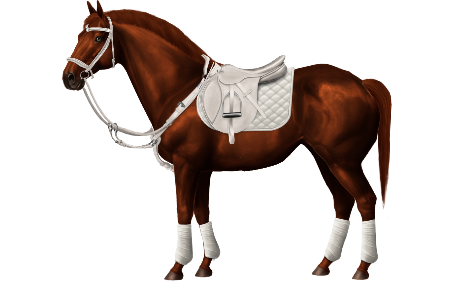
Discipline(s): Racing and Steeplechasing
Best Time(s): 02:00.56 minutes at Level 10 Racing competition and 10:22.62 minutes at Level 7 Steeplechasing competition
Status: Retired from competing. Not for public stud, may eventually be a public stud. Private stud only for now. Never for public/private sale, never will be.
Other Notes: Top Thoroughbred sire of Wild Horse Ridge Stables, has sired over 100 foals. Sire of Thunder. Sired two foals, as of July 3rd, 2020, that have a speed comment of "I think you've got the next Secretariat!".
Stormfire

Discipline(s): Racing
Best Time(s): 02:01.75 minutes at Level 2 Racing competition
Status: Retired from competing. Not for public stud, never will be. Private stud only. Never for public/private sale, never will be.
Other Notes: 3rd in 2019 MFI Belmont Stakes with a time of 02:03.07 minutes.
Christmas Gold

Discipline(s): Racing
Best Time(s): 02:01.68 minutes at Level 1 Racing competition
Status: Not for public stud, never will be. Private stud only. Never for public/private sale, never will be.
Other Notes: First ever painted racing Thoroughbred bred by Wild Horse Ridge Stables.
Beau

Discipline(s): Racing and Steeplechasing
Best Time(s): 01:59.73 minutes at Level 3 Racing competition and 10:31.78 minutes at Level 1 Steeplechasing competition
Status: Not for public stud, never will be. Private stud only. Never for public/private sale, never will be.
Other Notes: Has a speed comment of "I think you've got the next Secretariat!". Sired by Thunder.
Emma
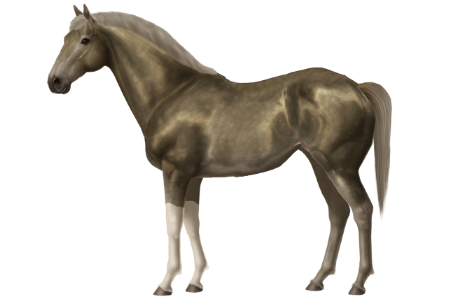
Discipline(s): Racing and maybe Harness Racing
Best Time(s): 02:01.52 minutes at Level 10 Racing competition
Status: Not for public lease, never will be. Never for public/private sale, never will be.
Other Notes: Winner of the 2020 MFI Coaching Club American Oaks. Sired by a previous racing record holder.
War Dappler
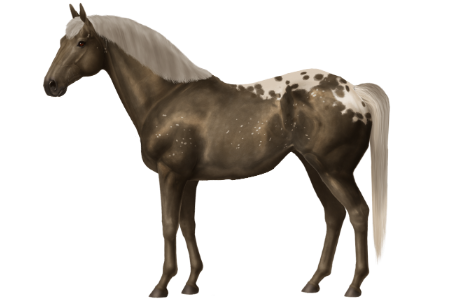
Discipline(s): Racing and Steeplechasing
Best Time(s): 01:58.67 minutes and 10:08.16 minutes at Level 1 Steeplechasing competition
Status: Not for public stud, never will be. Private stud only. Never for public/private sale, never will be. Not for sale.
Other Notes: First ever horse bred by me to break more than 2 records. Sired by War Emblem.

Discipline(s): Racing and Steeplechasing
Best Time(s): 02:00.56 minutes at Level 10 Racing competition and 10:22.62 minutes at Level 7 Steeplechasing competition
Status: Retired from competing. Not for public stud, may eventually be a public stud. Private stud only for now. Never for public/private sale, never will be.
Other Notes: Top Thoroughbred sire of Wild Horse Ridge Stables, has sired over 100 foals. Sire of Thunder. Sired two foals, as of July 3rd, 2020, that have a speed comment of "I think you've got the next Secretariat!".
Stormfire

Discipline(s): Racing
Best Time(s): 02:01.75 minutes at Level 2 Racing competition
Status: Retired from competing. Not for public stud, never will be. Private stud only. Never for public/private sale, never will be.
Other Notes: 3rd in 2019 MFI Belmont Stakes with a time of 02:03.07 minutes.
Christmas Gold

Discipline(s): Racing
Best Time(s): 02:01.68 minutes at Level 1 Racing competition
Status: Not for public stud, never will be. Private stud only. Never for public/private sale, never will be.
Other Notes: First ever painted racing Thoroughbred bred by Wild Horse Ridge Stables.
Beau

Discipline(s): Racing and Steeplechasing
Best Time(s): 01:59.73 minutes at Level 3 Racing competition and 10:31.78 minutes at Level 1 Steeplechasing competition
Status: Not for public stud, never will be. Private stud only. Never for public/private sale, never will be.
Other Notes: Has a speed comment of "I think you've got the next Secretariat!". Sired by Thunder.
Emma

Discipline(s): Racing and maybe Harness Racing
Best Time(s): 02:01.52 minutes at Level 10 Racing competition
Status: Not for public lease, never will be. Never for public/private sale, never will be.
Other Notes: Winner of the 2020 MFI Coaching Club American Oaks. Sired by a previous racing record holder.
War Dappler

Discipline(s): Racing and Steeplechasing
Best Time(s): 01:58.67 minutes and 10:08.16 minutes at Level 1 Steeplechasing competition
Status: Not for public stud, never will be. Private stud only. Never for public/private sale, never will be. Not for sale.
Other Notes: First ever horse bred by me to break more than 2 records. Sired by War Emblem.
Last edited by PeacefulOreo on Mon Dec 14, 2020 2:22 pm, edited 16 times in total.
-
PeacefulOreo

- Posts: 4984
- Joined: Fri Sep 07, 2018 7:55 pm
- Location: Eastern USA
- Visit My Farm
Re: Wild Horse Ridge Stables Farm Log (PLEASE DO NOT POST ON THIS FORUM)
Post by PeacefulOreo »
Arabians
About the breed
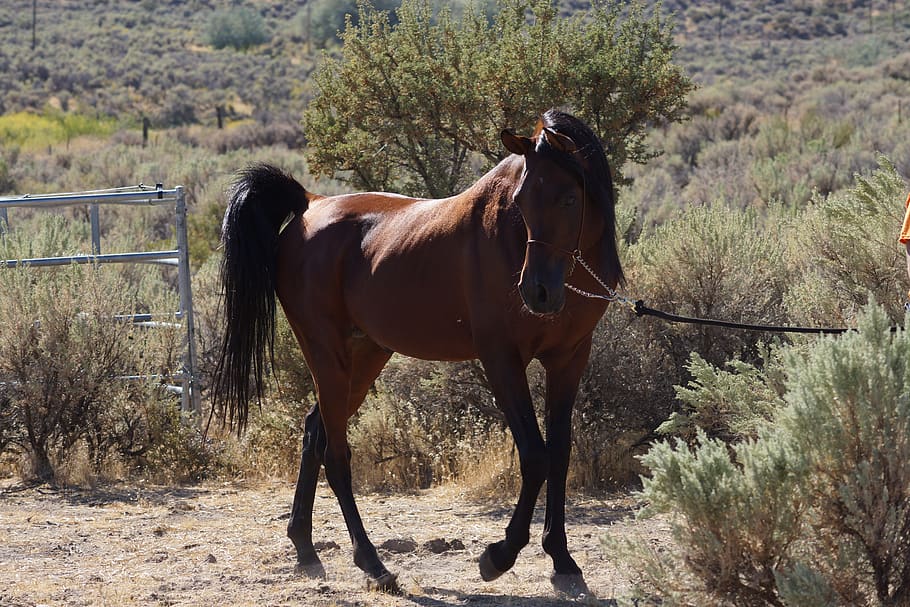
"The Arabian or Arab horse (Arabic: الحصان العربي [ ħisˤaːn ʕarabiː], DMG ḥiṣān ʿarabī) is a breed of horse that originated on the Arabian Peninsula. With a distinctive head shape and high tail carriage, the Arabian is one of the most easily recognizable horse breeds in the world. It is also one of the oldest breeds, with archaeological evidence of horses in the Middle East that resemble modern Arabians dating back 4,500 years. Throughout history, Arabian horses have spread around the world by both war and trade, used to improve other breeds by adding speed, refinement, endurance, and strong bone. Today, Arabian bloodlines are found in almost every modern breed of riding horse.
The Arabian developed in a desert climate and was prized by the nomadic Bedouin people, often being brought inside the family tent for shelter and protection from theft. Selective breeding for traits, including an ability to form a cooperative relationship with humans, created a horse breed that is good-natured, quick to learn, and willing to please. The Arabian also developed the high spirit and alertness needed in a horse used for raiding and war. This combination of willingness and sensitivity requires modern Arabian horse owners to handle their horses with competence and respect.
The Arabian is a versatile breed. Arabians dominate the discipline of endurance riding, and compete today in many other fields of equestrian sport. They are one of the top ten most popular horse breeds in the world. They are now found worldwide, including the United States and Canada, United Kingdom, Australia, continental Europe, South America (especially Brazil), and their land of origin, the Middle East.
Breed characteristics
Arabian horses have refined, wedge-shaped heads, a broad forehead, large eyes, large nostrils, and small muzzles. Most display a distinctive concave, or "dished" profile. Many Arabians also have a slight forehead bulge between their eyes, called the jibbah by the Bedouin, that adds additional sinus capacity, believed to have helped the Arabian horse in its native dry desert climate.[1][2] Another breed characteristic is an arched neck with a large, well-set windpipe set on a refined, clean throatlatch. This structure of the poll and throatlatch was called the mitbah or mitbeh by the Bedouin. In the ideal Arabian it is long, allowing flexibility in the bridle and room for the windpipe.[2]
Other distinctive features are a relatively long, level croup, or top of the hindquarters, and naturally high tail carriage. The USEF breed standard requires Arabians have solid bone and standard correct equine conformation.[3] Well-bred Arabians have a deep, well-angled hip and well laid-back shoulder.[4] Within the breed, there are variations. Some individuals have wider, more powerfully muscled hindquarters suitable for intense bursts of activity in events such as reining, while others have longer, leaner muscling better suited for long stretches of flat work such as endurance riding or horse racing.[5] Most have a compact body with a short back.[2] Arabians usually have dense, strong bone, and good hoof walls. They are especially noted for their endurance,[6][7] and the superiority of the breed in Endurance riding competition demonstrates that well-bred Arabians are strong, sound horses with superior stamina. At international FEI-sponsored endurance events, Arabians and half-Arabians are the dominant performers in distance competition.[8]"
- This information was found on Wikipedia.
Best
Crusader

Status: Not for public stud, never will be. Private stud only. Never for public/private sale, never will be.
Other Notes: One of my finest purebred Arabians
Amir

Status: Not for public stud, never will be. Private stud only. Never for public/private sale, never will be.
Other Notes: One of my finest purebred Arabians
Cormac

Status: Not for public stud, never will be. Private stud only. Never for public/private sale, never will be.
Other Notes: One of my finest purebred Arabians

Status: Not for public stud, never will be. Private stud only. Never for public/private sale, never will be.
Other Notes: One of my finest purebred Arabians
Amir

Status: Not for public stud, never will be. Private stud only. Never for public/private sale, never will be.
Other Notes: One of my finest purebred Arabians
Cormac

Status: Not for public stud, never will be. Private stud only. Never for public/private sale, never will be.
Other Notes: One of my finest purebred Arabians
Last edited by PeacefulOreo on Fri Jul 03, 2020 8:26 pm, edited 1 time in total.
-
PeacefulOreo

- Posts: 4984
- Joined: Fri Sep 07, 2018 7:55 pm
- Location: Eastern USA
- Visit My Farm
Re: Wild Horse Ridge Stables Farm Log (PLEASE DO NOT POST ON THIS FORUM)
Post by PeacefulOreo »
Trakehners
About the breed
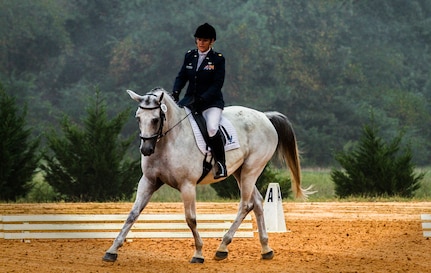
"Trakehner is a light warmblood breed of horse, originally developed at the East Prussian state stud farm in the town of Trakehnen from which the breed takes its name. The state stud (de:Hauptgestüt Trakehnen) was established in 1731 and operated until 1944, when the fighting of World War II led to the annexing of East Prussia by Russia, and the town containing the stud renamed as Yasnaya Polyana.
The Trakehner typically stands between 15.2 and 17 hands (62 and 68 inches, 157 and 173 cm). They can be any color, with bay, gray, chestnut and black being the most common, though the breed also includes few roan and tobiano pinto horses. It is considered to be the lightest and most refined of the warmbloods, due to its closed stud book which allows entry of only Trakehner, as well as few selected Thoroughbred, Anglo-Arabian, Shagya and Arabian bloodlines.
Breed characteristics
Owing to its Thoroughbred ancestry, the Trakehner is of rectangular build, with a long sloping shoulder, good hindquarters, short cannons, and a medium-long, crested and well-set neck. The head is often finely chiseled, narrow at the muzzle, with a broad forehead. It is known for its "floating trot" - full of impulsion and suspension. The Trakehner possesses a strong, medium-length back and powerful hindquarters.
Trakehners are athletic and trainable, with good endurance, while some are more spirited than horses of other warmblood breeds. Trakehners breed true to type, due to the purity of the bloodlines, making it valuable for upgrading other warmbloods."
- This information was found on Wikipedia.
Best
High Distraction

Discipline(s): Dressage and Pole Bending
Best Score(s): 45.83% at Level 3 Dressage competition
Status: Not for public stud, never will be. Private stud only. Never for public/private sale, never will be.
Other Notes: Bred by Fallon.
Tender of the Trust

Discipline(s): Dressage and Western Pleasure
Best Score(s): 60.2 at Level 3 Western Pleasure competition and 47.85% at Level 10 and Level 4 Dressage competitions
Status: Not for public stud, never will be. Private stud only. Never for public/private sale, never will be.
Other Notes: Bred by Fallon.

Discipline(s): Dressage and Pole Bending
Best Score(s): 45.83% at Level 3 Dressage competition
Status: Not for public stud, never will be. Private stud only. Never for public/private sale, never will be.
Other Notes: Bred by Fallon.
Tender of the Trust

Discipline(s): Dressage and Western Pleasure
Best Score(s): 60.2 at Level 3 Western Pleasure competition and 47.85% at Level 10 and Level 4 Dressage competitions
Status: Not for public stud, never will be. Private stud only. Never for public/private sale, never will be.
Other Notes: Bred by Fallon.
Last edited by PeacefulOreo on Fri Jul 03, 2020 8:27 pm, edited 1 time in total.
-
PeacefulOreo

- Posts: 4984
- Joined: Fri Sep 07, 2018 7:55 pm
- Location: Eastern USA
- Visit My Farm
Re: Wild Horse Ridge Stables Farm Log (PLEASE DO NOT POST ON THIS FORUM)
Post by PeacefulOreo »
Warlanders
About the breed

"The Warlander is a horse of Baroque type, produced by crossing Friesian horses with horses of a purebred registered Iberian horse breed such as the Andalusian, Lusitano, or Menorquina.[2] The ideal Warlander combines the Iberian horse's intelligence, facility for collection, flexibility, and powerful hindquarters, with the Friesian's tractability, dramatic leg action, "bone," and strong forequarters.
Breed characteristics
Warlander breeders seek to augment the strongest and most desirable qualities of Iberian and Friesian breeds through the genetic heterosis created by combining two purebred lines. Another goal is to address concerns related to inbreeding depression that may exist in progenitor lines as a result of having closed genetic stock.[6][7] Because of this, significant debate exists over whether a Warlander will only obtain genetic benefit if it is an F1 hybrid.[8] A crossbred animal is likely to enjoy hybrid vigor and therefore have genetic gains over both of its parents.[8] However, there is uncertainty over whether an F2 horse - produced by a Warlander-Warlander, Warlander-Andalusian, or Warlander-Friesian pairing - would be likely to suffer from genetic atavism.[8] The statistically tiny number of F2 and subsequent generation Warlander horses bred internationally has meant empirical resolution of this question has not yet been possible.[8][dubious – discuss] [9] The Warlander Studbook Society acknowledges that the following genetic defects are known to come from the base breeds of the Warlander and WSS breeders must notify the society if any horses show the following - Cryptorchidism, Monorchidism. Dwarfism, Fallen Crest, Water head/crown head foals (hydrocephalus) and Mesocolic Rente.[10][1]"
- This information was found on Wikipedia.
Best
[horse=][/horse]
Status: Not for public stud, never will be. Private stud only. Never for public/private sale, never will be.
Other Notes:
[horse=][/horse]
Status: Not for public stud, never will be. Private stud only. Never for public/private sale, never will be.
Other Notes:
Status: Not for public stud, never will be. Private stud only. Never for public/private sale, never will be.
Other Notes:
[horse=][/horse]
Status: Not for public stud, never will be. Private stud only. Never for public/private sale, never will be.
Other Notes:
Last edited by PeacefulOreo on Fri Jul 03, 2020 8:27 pm, edited 1 time in total.
-
PeacefulOreo

- Posts: 4984
- Joined: Fri Sep 07, 2018 7:55 pm
- Location: Eastern USA
- Visit My Farm
Re: Wild Horse Ridge Stables Farm Log (PLEASE DO NOT POST ON THIS FORUM)
Post by PeacefulOreo »
Hanoverians
About the breed
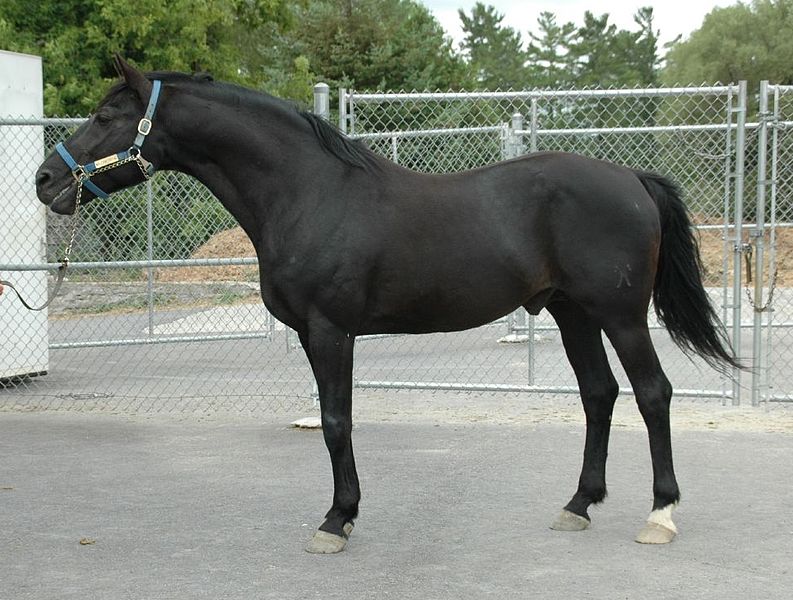
"A Hanoverian (German: Hannoveraner) is a warmblood horse breed originating in Germany, which is often seen in the Olympic Games and other competitive English riding styles, and has won gold medals in all three equestrian Olympic competitions. It is one of the oldest, most numerous, and most successful of the warmbloods. Originally a carriage horse, infusions of Thoroughbred blood lightened it to make it more agile and useful for competition. The Hanoverian is known for a good temperament, athleticism, beauty, and grace.
Breed characteristics
Hanoverians are elegant, strong, and robust. They are bred to be willing and trainable, and have a strong back, powerful body, athletic movement, and strong limbs. Chestnut, bay, black, and gray are found the most often. Regulations prohibit horses with too much white, and buckskin, palomino and cremello horses from being registered. The horses can be 15.3–17.2 hands (63–70 inches, 160–178 cm) high, but most are in the range of 16–16.2 hands (64–66 inches, 163–168 cm).[1]"
- This information was found on Wikipedia.
Best
[horse=][/horse]
Status: Not for public stud, never will be. Private stud only. Never for public/private sale, never will be.
Other Notes:
[horse=][/horse]
Status: Not for public stud, never will be. Private stud only. Never for public/private sale, never will be.
Other Notes:
Status: Not for public stud, never will be. Private stud only. Never for public/private sale, never will be.
Other Notes:
[horse=][/horse]
Status: Not for public stud, never will be. Private stud only. Never for public/private sale, never will be.
Other Notes:
Last edited by PeacefulOreo on Fri Jul 03, 2020 8:28 pm, edited 1 time in total.
-
PeacefulOreo

- Posts: 4984
- Joined: Fri Sep 07, 2018 7:55 pm
- Location: Eastern USA
- Visit My Farm
Re: Wild Horse Ridge Stables Farm Log (PLEASE DO NOT POST ON THIS FORUM)
Post by PeacefulOreo »
Morgans
About the breed
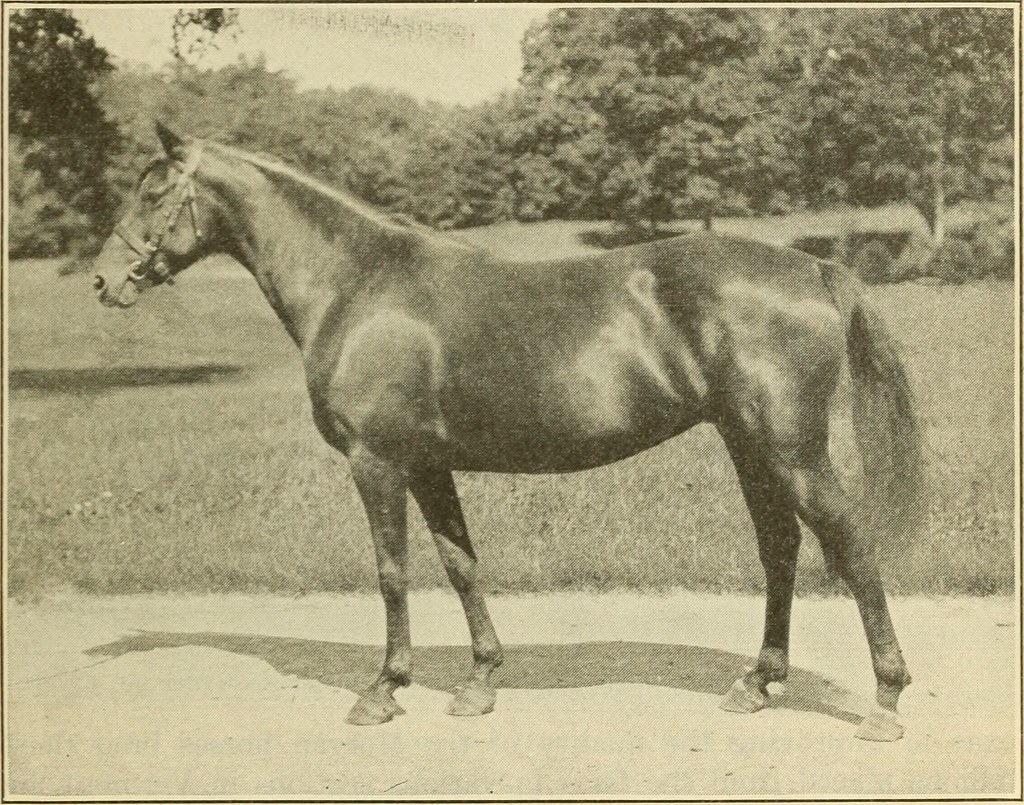
"The Morgan horse is one of the earliest horse breeds developed in the United States.[1] Tracing back to the foundation sire Figure, later named Justin Morgan after his best-known owner, Morgans served many roles in 19th-century American history, being used as coach horses and for harness racing, as general riding animals, and as cavalry horses during the American Civil War on both sides of the conflict. Morgans have influenced other major American breeds, including the American Quarter Horse, Tennessee Walking Horse and the Standardbred. During the 19th and 20th centuries, they were exported to other countries, including England, where a Morgan stallion influenced the breeding of the Hackney horse. In 1907, the US Department of Agriculture established the US Morgan Horse Farm near Middlebury, Vermont for the purpose of perpetuating and improving the Morgan breed; the farm was later transferred to the University of Vermont.The first breed registry was established in 1909, and since then many organizations in the US, Europe and Oceania have developed. There were estimated to be over 175,000 Morgan horses worldwide in 2005.
The Morgan is a compact, refined breed, generally bay, black or chestnut in color, although they come in many colors, including several variations of pinto. Used in both English and Western disciplines, the breed is known for its versatility. The Morgan is the state animal of Vermont and the state horse of Massachusetts and the state mammal of Rhode Island. Popular children's authors, including Marguerite Henry and Ellen Feld, have portrayed the breed in their books; Henry's Justin Morgan Had a Horse was later made into a Disney movie.[1]
Breed characteristics
There is officially one breed standard for the Morgan type, regardless of the discipline or bloodline of the individual horse. Compact and refined in build, the Morgan has strong legs, an expressive head with a straight or slightly convex profile and broad forehead; large, prominent eyes; well-defined withers, laid back shoulders, and an upright, well arched neck.[2] The back is short,[3] and hindquarters are strongly muscled,[2] with a long and well-muscled croup. The tail is attached high and carried gracefully and straight.[3] Morgans appear to be a strong powerful horse,[3] and the breed is well known as an easy keeper.[1] The breed standard for height ranges from 14.1 to 15.2 hands (57 to 62 inches, 145 to 157 cm), with some individuals over and under.[2]
Gaits, particularly the trot are "animated, elastic, square, and collected," with the front and rear legs balanced.[2] A few Morgans are gaited, meaning they can perform an intermediate speed gait other than the trot such as the rack, fox trot, or pace.[1] The United States Equestrian Federation states, "a Morgan is distinctive for its stamina and vigor, personality and eagerness and strong natural way of moving."[3] The breed has a reputation for intelligence, courage and a good disposition.[4] Registered Morgans come in a variety of colors although they are most commonly bay, black, and chestnut. Less common colors include gray, roan, dun, silver dapple, and cream dilutions such as palomino, buckskin, cremello and perlino.[5] In addition, three pinto color patterns are also recognized: sabino, frame overo, and splashed white. The tobiano pattern has not been noted in Morgans.[5]
One genetic disease has been identified within the Morgan breed. This is Type 1 polysaccharide storage myopathy, an autosomal dominant muscle disease found mainly in stock horse and draft horse breeds caused by a missense mutation in the GYS1 gene. Morgans are one of over a dozen breeds found to have the allele for the condition, though its prevalence in Morgans appears to be quite low compared to stock and draft breeds.[6] In one study, less than one percent of randomly tested Morgans carried the allele for this condition, one of the lowest percentages amongst breeds in that study.[7]
Two coat color genes found in Morgans have also been linked to genetic disorders. One is the genetic ocular syndrome multiple congenital ocular anomalies (MCOA), originally called equine anterior segment dysgenesis (ASD). MCOA is characterized by the abnormal development of some ocular tissues, which causes compromised vision, although generally of a mild form; the disease is non-progressive. Genetic studies have shown that it is closely tied to the silver dapple gene.[8] A small number of Morgans carry the silver dapple allele, which causes cysts but no apparent vision problems if heterozygous, but when homozygous can cause vision problems.[9] There is also the possibility of lethal white syndrome, a fatal disease seen in foals who are homozygous for the frame overo gene. At present, there is one mare line in the Morgan breed that has produced healthy heterozygous frame overo individuals.[10] The American Morgan Horse Association advocates genetic testing to identify carriers of these genetics, and advises owners to avoid breeding horses that are heterozygous for frame overo to each other.[11]"
- This information was found on Wikipedia.
Best
[horse=][/horse]
Status: Not for public stud, never will be. Private stud only. Never for public/private sale, never will be.
Other Notes:
[horse=][/horse]
Status: Not for public stud, never will be. Private stud only. Never for public/private sale, never will be.
Other Notes:
Status: Not for public stud, never will be. Private stud only. Never for public/private sale, never will be.
Other Notes:
[horse=][/horse]
Status: Not for public stud, never will be. Private stud only. Never for public/private sale, never will be.
Other Notes:
Last edited by PeacefulOreo on Fri Jul 03, 2020 8:29 pm, edited 1 time in total.
-
PeacefulOreo

- Posts: 4984
- Joined: Fri Sep 07, 2018 7:55 pm
- Location: Eastern USA
- Visit My Farm
Re: Wild Horse Ridge Stables Farm Log (PLEASE DO NOT POST ON THIS FORUM)
Post by PeacefulOreo »
Morabs
About the breed

"The Morab is an American breed of horse originally developed through the cross-breeding of Arabian and Morgan horses. The breeding of Morab horses began in the late 1880s with the intent of creating a fine carriage horse that was still substantial enough for moderate farm labor.[1]
Breed characteristics
The Morab usually stands between 144 and 157 cm (14.1 and 15.2 hands) at the withers,[1]:487 but may reach 163 cm (16.0 h).[2]:450 It may be of any solid color, including bay, black, chestnut or gray, or sometimes buckskin, palomino or dun.[2]:450[3]
The head is generally fine, with a broad forehead, large eyes, small ears, and a slightly concave profile. The mane and tail are thick, the tail high-set and often held high.[2]:450"
- This information was found on Wikipedia.
Best
[horse=][/horse]
Status: Not for public stud, never will be. Private stud only. Never for public/private sale, never will be.
Other Notes:
[horse=][/horse]
Status: Not for public stud, never will be. Private stud only. Never for public/private sale, never will be.
Other Notes:
Status: Not for public stud, never will be. Private stud only. Never for public/private sale, never will be.
Other Notes:
[horse=][/horse]
Status: Not for public stud, never will be. Private stud only. Never for public/private sale, never will be.
Other Notes:
Last edited by PeacefulOreo on Fri Jul 03, 2020 8:29 pm, edited 1 time in total.
-
PeacefulOreo

- Posts: 4984
- Joined: Fri Sep 07, 2018 7:55 pm
- Location: Eastern USA
- Visit My Farm
Re: Wild Horse Ridge Stables Farm Log (PLEASE DO NOT POST ON THIS FORUM)
Post by PeacefulOreo »
American Saddlebreds
About the breed
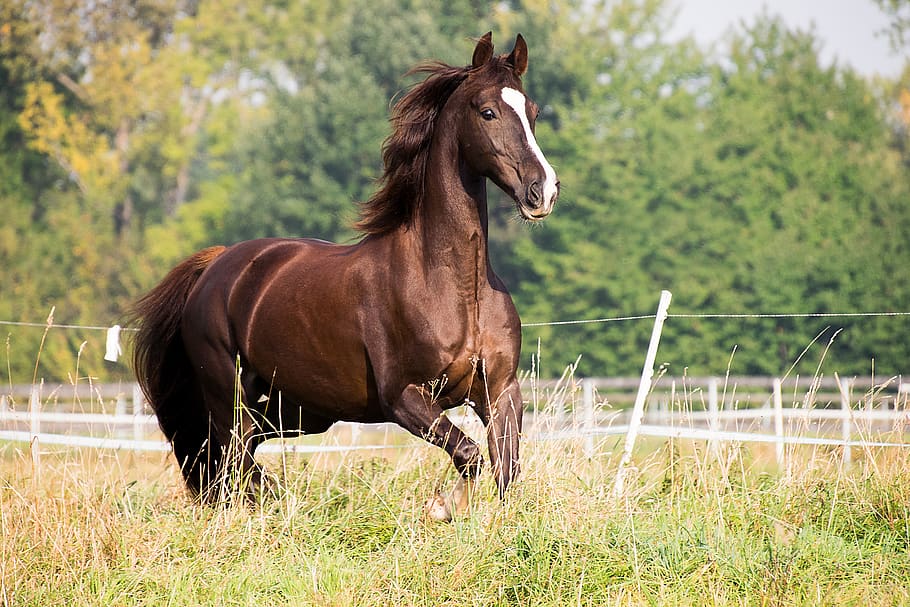
"The American Saddlebred is a horse breed from the United States. This breed was referred to as the "Horse America Made".[1] Descended from riding-type horses bred at the time of the American Revolution, the American Saddlebred includes the Narragansett Pacer, Canadian Pacer, Morgan and Thoroughbred among its ancestors. Developed into its modern type in Kentucky, it was once known as the "Kentucky Saddler", and used extensively as an officer's mount in the American Civil War. In 1891, a breed registry was formed in the United States. Throughout the 20th century, the breed's popularity continued to grow in the United States, and exports began to South Africa and Great Britain. Since the formation of the US registry, almost 250,000 American Saddlebreds have been registered, and can now be found around the world, with separate breed registries established in Great Britain, Australia, continental Europe, and southern Africa.
Averaging 15 to 16 hands (60 to 64 inches, 152 to 163 cm) in height, Saddlebreds are known for their sense of presence and style, as well as for their spirited, yet gentle, temperament. They may be of any color, including pinto patterns, which have been acknowledged in the breed since the late 1800s. They are considered a gaited breed, as some Saddlebreds are bred and trained to perform four-beat ambling gaits, one being a "slow gait" that historically was one of three possible ambling patterns, and the much faster rack.
They have attracted the attention of numerous celebrities, who have become breeders and exhibitors, and purebred and partbred American Saddlebreds have appeared in several films, especially during the Golden Age of Hollywood. Saddlebreds are mainly known for their performance in the show ring, but can also be seen in competition in several other English riding disciplines and combined driving, as well as being used as a pleasure riding horse. American Saddlebreds often compete in five primary divisions: Five-Gaited, Three-Gaited, Fine Harness, Park and Pleasure. In these divisions they are judged on performance, manners, presence, quality and conformation.[2][1]
Breed characteristics
American Saddlebreds stand 15 to 17 hands (60 to 68 inches, 152 to 173 cm) high,[3] averaging 15 to 16 hands (60 to 64 inches, 152 to 163 cm),[4] and weigh between 1,000 and 1,200 pounds (450 and 540 kg). Members of the breed have well-shaped heads with a straight profile, long, slim, arched necks, well-defined withers, sloping shoulders, correct leg conformation, and strong level backs with well-sprung ribs. The croup is level with a high-carried tail.[5] Enthusiasts consider them to be spirited, yet gentle, animals.[3] Any color is acceptable, but most common are chestnut, bay, brown and black. Some are gray, roan, palomino and pinto.[5] The first-known pinto Saddlebred was a stallion foaled in 1882. In 1884 and 1891, two additional pintos, both mares, were foaled. These three horses were recorded as "spotted", but many other pinto Saddlebreds with minimal markings were recorded only by their base color, without making note of their markings. This practice continued into the 1930s, at which time breeders came to be more accepting of "colored" horses and began recording markings and registering horses as pinto.[6] The Saddlebred has been called the "world's most beautiful horse" by admirers, and is known as the "peacock of the horse world".[7] The United States Equestrian Federation (USEF) describes the Saddlebred as follows: "He carries himself with an attitude that is elusive of description—some call it "class", presence, quality, style, or charm. This superior air distinguishes his every movement."[5]
Saddlebreds are popularly known as show horses, with horses being shown saddle seat in both three-gaited and five-gaited classes. The former are the three common gaits seen in most breeds, the walk, trot and canter. The latter includes the three regular gaits, plus two four-beat ambling gaits known as the slow gait and the rack.[3] Historically, the slow gait could be either a running walk, the stepping pace, or the fox trot,[8] however, the modern five-gaited Saddlebred typically performs a stepping-pace.[3] The stepping pace is a four-beat gait in which the lateral pairs of legs leave the ground together, but strike the ground at different times, the hind foot connecting slightly before the forefoot. In the show ring, the gait should be performed with restraint and precision. The rack is also a four-beat gait, but with equal intervals between each footfall. In the show ring, the gait is performed with speed and action, appearing unrestrained.[9]
Lordosis, also known as swayback, low back or soft back, has been found to have a hereditary basis in Saddlebreds and a recessive mode of inheritance. The precise mutation has not yet been located, but researchers believe it to be somewhere on horse chromosome 20. Researching this condition may help more than just the Saddlebred breed as it may "serve as a model for investigating congenital skeletal deformities in horses and other species."[10] Horses with lordosis are generally healthy and unaffected by the condition, and are eligible to compete in many divisions, but a swayback must be penalized as a fault at shows, in addition to other conformation flaws.[5]"
- This information was found on Wikipedia.
Best
[horse=][/horse]
Status: Not for public stud, never will be. Private stud only. Never for public/private sale, never will be.
Other Notes:
[horse=][/horse]
Status: Not for public stud, never will be. Private stud only. Never for public/private sale, never will be.
Other Notes:
Status: Not for public stud, never will be. Private stud only. Never for public/private sale, never will be.
Other Notes:
[horse=][/horse]
Status: Not for public stud, never will be. Private stud only. Never for public/private sale, never will be.
Other Notes:
Last edited by PeacefulOreo on Fri Jul 03, 2020 8:30 pm, edited 2 times in total.
-
PeacefulOreo

- Posts: 4984
- Joined: Fri Sep 07, 2018 7:55 pm
- Location: Eastern USA
- Visit My Farm
Re: Wild Horse Ridge Stables Farm Log (PLEASE DO NOT POST ON THIS FORUM)
Post by PeacefulOreo »
Connemaras
About the breed

"The Connemara Pony (Irish: Capaillín Chonamara) is a pony breed originating in Ireland. They are known for their athleticism, versatility and good disposition. The breed makes excellent show ponies.
Breed characteristics
The original breed standard is set by the Connemara Pony Breeders' Society of Ireland, and also used by the British Connemara Pony Society. The adults are usually 128 to 148 cm (12.2 to 14.2 h; 50 to 58 in) in height, with a strong back, loins, and hindquarters, deep and broad through the ribs, and with a riding-type well laid-back shoulder and well-placed neck without undue crest, giving a good length of rein. The head should be of pony type, broad between the eyes, which should be large and appear kind, and with a deep but refined jaw and clearly defined cheekbone. The ears should be of pony type (relatively short). The legs should be relatively short from the knees and hocks to the ground, with a strong, muscular upper leg, strong and well-defined knees and hocks, and well-shaped hard feet, which are of a medium size. The action should be free, active, and easy. Permitted colours are grey, black, brown, bay, dun,[3] roan, chestnut, palomino, and cream. Pinto colouring (piebald and skewbald) is not accepted. The Connemara Pony should be intelligent with a good temperament, suitable for adults and children; it should be hardy with good endurance; it should be sure-footed, sound, and able to jump.[4] [5] If a Connemara Pony is to be passed as grade 1 on inspection by the Connemara Pony Breeder's Society, it must meet the breed standard; if it does not meet this specification, then it will be given a grade 2 or 3 on inspection.[6] Connemaras in North America range from 13 to 15 hands (52 to 60 inches, 132 to 152 cm).[7]
Some Connemara Ponies carry the autosomal recessive disorder hoof wall separation disease[8] and all foals born are tested as part of the registration process. [9]"
- This information was found on Wikipedia.
Best
[horse=][/horse]
Status: Not for public stud, never will be. Private stud only. Never for public/private sale, never will be.
Other Notes:
[horse=][/horse]
Status: Not for public stud, never will be. Private stud only. Never for public/private sale, never will be.
Other Notes:
Status: Not for public stud, never will be. Private stud only. Never for public/private sale, never will be.
Other Notes:
[horse=][/horse]
Status: Not for public stud, never will be. Private stud only. Never for public/private sale, never will be.
Other Notes:
Last edited by PeacefulOreo on Fri Jul 03, 2020 8:31 pm, edited 1 time in total.
Jump to
- General Discussion
- ↳ Announcements
- ↳ Weekly Development Updates
- ↳ General Chit Chat
- ↳ Contests
- ↳ What Colour Is My Horse?
- ↳ Comments and Suggestions
- ↳ Suggestions Archive
- ↳ Breeding Communities
- ↳ Farm Logs
- Marketplace
- ↳ Horses for Sale
- ↳ Stallions at Stud
- Knowledgebase & Guides
- ↳ Gameplay Questions & Help
- ↳ Guides & How To
- Technical
- ↳ Change Log v3
- Guest Discussions
- ↳ Public Questions & Answers
